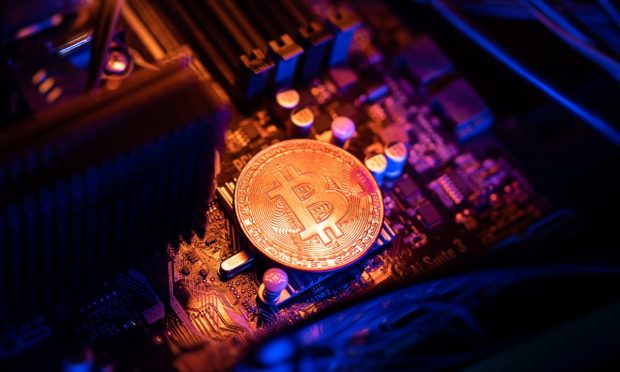Crypto Insolvencies Spread as Top Bitcoin Mining Pool Halts Withdrawals

A crypto mining pool that accounts for nearly 10% of bitcoin’s computing power has cut off withdrawals, citing liquidity issues as it blocks members from accessing their cryptocurrency.
Many of the crypto insolvencies and bankruptcies seen in the past few months by firms like Celsius, Voyager Digital and Three Arrows Capital all track back — either directly or indirectly — to the collapse of the Terra/LUNA stablecoin ecosystem.
Read more: How a Stablecoin’s $48B Collapse Rippled Across Crypto
But Poolin, which allows individual miners to pool their computing power and gain a share of new bitcoins and ether mined, isn’t a lender that made bad loans or hedge fund that made bad investments. Instead, it is a collective of bitcoin and ethereum miners who pool their computing power in exchange for a share of the 6.25 bitcoins earned when any member wins the right to add a new block of transactions to the blockchain.
There are plenty of reasons to withdraw earnings — most notably to put them under your own control in a safer, private cold wallet. However, Poolin’s vague statement that it is acting because of unspecified “liquidity problems due to recent increasing demands on withdrawals” is unsettling — particularly as it asserts that its “net worth is positive” and that all users’ assets are safe.
Still, one of the basic reasons to withdraw funds is to sell the bitcoin, which would suggest that more people are getting out of crypto, even with bitcoin currently below $20,000. Bitcoin earned can be used to rent hashing power from Poolin’s mining farms, increasing earnings.
However, most miners are hodlers — “hold on for dear life,” a term popular among crypto believers — so it is a potentially worrying sign for the industry if they are pulling funds out.
Possible DeFi Connection?
While it isn’t clear — nor has it even been suggested — that Poolin’s problems are related to the failure of the Three Arrows Capital hedge fund that owed billions to many of the crypto lenders that faced insolvency as a result, it did do business with the fund, BeInCrypto reported. It also did business with BlockFi, a crypto lender saved from insolvency by FTX crypto exchange CEO Sam Bankman-Fried’s backing.
But it had also dabbled with decentralized finance (DeFi) — specifically with risky yield farming, according to Cory Klippsten, an analyst for Swan Private, a firm focused on advising corporations and high-net-worth individuals on bitcoin investing.
See also: DeFi Series: What is Yield Farming and Liquidity Mining?
“All the way back in February 2021, Poolin was into DeFi yield farming. What could possibly go wrong??” he tweeted on Sept. 5, after the withdrawal halt was announced.
Pulling Out
A week ago, Poolin represented almost 10% of the global “hash power” — the total computing power working on mining bitcoin. That made it the fifth-largest mining pool, according to BTC.com. Now, it has just 4.6% and is in eighth place.
Miners who cannot withdraw the bitcoin and ether in their accounts are withdrawing their computing power, which they can easily switch to another pool. As such, the amount of bitcoins Poolin is earning will be down more than half, which can’t help ease liquidity problems.
Bitcoin’s blockchain is secured, and new blocks on transactions are added to it via a consensus mechanism called proof-of-work, or PoW, in which miners race to solve a math puzzle that gives them the right to verify transactions’ accuracy, add them into a block and write it onto the bitcoin blockchain. In exchange, they get newly-minted bitcoins — 6.25 BTC per block at present.
Learn more: Crypto Basics Series: What’s a Consensus Mechanism and Why Is It Destroying the Planet?
It is this computing-powered math race that causes bitcoin’s massive electricity bill, as well as the resulting pollution that has caused so much opposition to the currency. Mining pools like Poolin are where most of that work is done.
For all PYMNTS crypto coverage, subscribe to the daily Crypto Newsletter.
